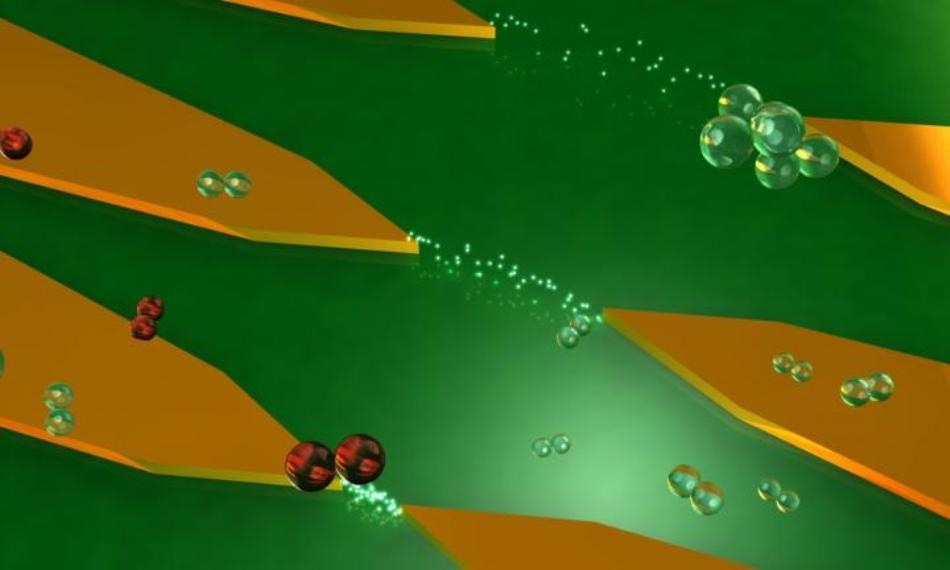Nov 20 2018
Scientists at RMIT University have developed a new type of transistor, which is the building block for all electronics. These transistors transmit electrons via narrow air gaps rather than transmitting electrical currents through silicon. The narrow air gaps enable the electrons to travel without any hindrance as if in space.
 Electrons jump the nanoscale air gap between metal parts in the newly designed, silicon-free transistor. (Image credit: RMIT University)
Electrons jump the nanoscale air gap between metal parts in the newly designed, silicon-free transistor. (Image credit: RMIT University)
The device discussed in material sciences journal Nano Letters does not use any semiconductor at all, rendering it faster and less susceptible to heating up.
According to Ms Shruti Nirantar, lead author and PhD candidate in RMIT’s Functional Materials and Microsystems Research Group, this potential proof-of-concept design for nanochips as a combination of metal and air gaps could be a breakthrough in the field of electronics.
Every computer and phone has millions to billions of electronic transistors made from silicon, but this technology is reaching its physical limits where the silicon atoms get in the way of the current flow, limiting speed and causing heat. Our air channel transistor technology has the current flowing through air, so there are no collisions to slow it down and no resistance in the material to produce heat.
Shruti Nirantar, Lead Author and PhD candidate, Functional Materials and Microsystems Research Group, RMIT
Moore’s Law
For decades, the power of computer chips—or the number of transistors confined onto a silicon chip—has increased on a predictable path, almost doubling every two years. However, this rate of progress, called Moore’s Law, has decreased in recent years as engineers find it difficult to make transistor parts—which are already smaller than the tiniest viruses—still smaller.
According to Nirantar, their research is a hopeful way forward for nanoelectronics with regards to the constraint of silicon-based electronics.
“This technology simply takes a different pathway to the miniaturization of a transistor in an effort to uphold Moore’s Law for several more decades,” she said.
A New Way Forward
According to Research team leader and Associate Professor Sharath Sriram, the design resolved a key defect in conventional solid-channel transistors—they are packed with atoms—where the electrons passing through them collided, slowed down, and wasted energy in the form of heat.
Imagine walking on a densely crowded street in an effort to get from point A to B. The crowd slows your progress and drains your energy. Travelling in a vacuum, on the other hand, is like an empty highway where you can drive faster with higher energy efficiency.
Sharath Sriram, Associate Professor, RMIT
Although this theory is clear, vacuum packaging solutions related to transistors to render them faster would also make them larger in size, so they are not feasible.
“We address this by creating a nanoscale gap between two metal points. The gap is only a few tens of nanometers, or 50,000 times smaller than the width of a human hair, but it’s enough to fool electrons into thinking that they are travelling through a vacuum and re-create a virtual outer-space for electrons within the nanoscale air gap,” he said.
The nanoscale device is intended to be compatible with modern industry fabrication and development processes. Furthermore, it finds applications in space as electronics resistant to radiation as well as to use electron emission for steering and positioning “nano-satellites.”
This is a step towards an exciting technology which aims to create something out of nothing to significantly increase speed of electronics and maintain pace of rapid technological progress.
Sharath Sriram, Associate Professor, RMIT
This study was performed at RMIT University’s cutting-edge Micro Nano Research Facility and with the support of the Victorian node of the Australian National Fabrication Facility.